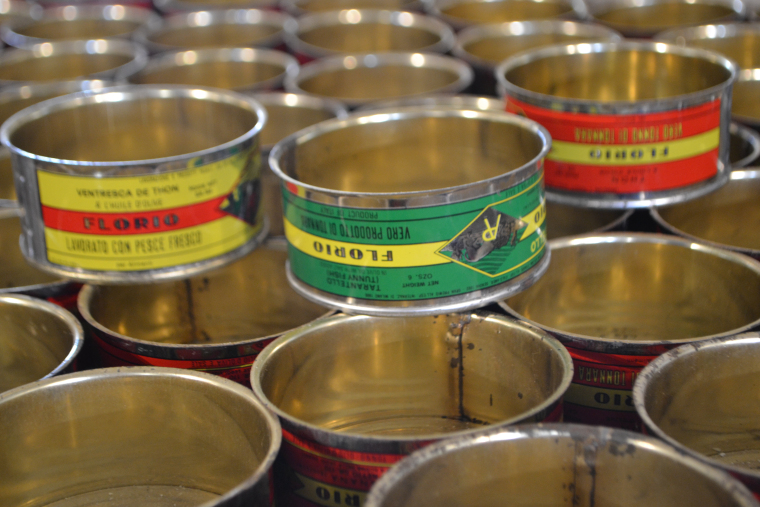The opening hours in the summer are from 10:00 to 13:30 and from 17:00 to 23:30. There is the possibility of guided tours in three hours: 10.30 - 11.15 - 12.00 - 17.15 - 18.00 - 19.00 - 20.00 - 21.00 - 22.00. Monday is closed.
If you can and can, opt for a guided tour: it is an added value not to be missed. The guide Francesca, will take you to the discovery of the wonderful world of the tonnaroti, the tonnara and all the Favignanesi who have worked inside. The history of the establishment is intertwined with that of the Florio family first and the Parodi family later, which gave the islanders the opportunity to redeem themselves from poverty by having a source of economic subsistence.
Inside the former Florio factory there is an archaeological museum with finds found on the Egadi islands, such as amphorae, statues, dating back to different historical periods, including the era of the Punic Wars.
The first nucleus of the plant, which today extends for 32 thousand square meters, dates back to 1859, the year in which the Genoese Giulio Drago rented the tonnara of Favignana. The grandiose establishment, however, took life only thanks to the senator Ignazio Florio (1838-1891) who in 1878 had the buildings of the tonnara restored. In fact, Francesca explained to us, the term tonnara is often used improperly (I have just done it): the tonnara is not the building, but the characteristic network used for tuna fishing. After the splendor and the redemption of the Florio family, the Parodi, once again Genoese, will be imposing on the scene, which will buy the establishment in 1937. The plant continued to work profitably, being one of the main economic sources of the island. Unfortunately, in the seventies it definitively ceased its activity as it could no longer be competitive in the Mediterranean market. Probably the cessation of the activity was also due to the large number of unregulated flying tuna.
It seems that the island of Favignana has again requested the granting of quotas for tuna fishing and there are good hopes that the plant will reopen with the advantage of being the most sustainable in Europe.
The establishment is immense and entirely built with tuff, a resource of the island and stone with which most of the island´s houses are built. Thanks to its characteristic of insulating material, it is ideal for building houses and structures just a few steps from the sea and in areas that are as breezy as islands. The important restoration work carried out between 2003 and 2009 has revived the numerous environments, such as offices, warehouses, carpentry, changing rooms for men and changing rooms for women, gallery of machines, ovens used for cooking, the three high chimneys, the oil room, the marfarage ...
Fishing with the fixed tonnara contains history and culture, rituals, knowledge and traditions that have been handed down for generations. Little has changed since the time of the Phoenicians or Arabs, the techniques used are practically the same. The rais, at the stern of the muciara, prays his God and the saints so that the sea is generous, the tuna traps are pushed inside the tonnara from one room to another, up to the death chamber, where the mattanza begins. tonnaroti hoist the huge fish aboard and hit them with quick and precise gestures to avoid being hit by the blows of the tail, the sea turns red. A vision that may seem bloody, but that has the approval of environmentalists and is considered one of the most environmentally friendly solutions for fishing bluefin tuna. Only adult specimens are killed, while younger ones and other species are released.
After the slaughter, the tuna were brought near the plant. The workers removed their heads and extracted their entrails and, once they had been disemboweled, the tuna was transported to low-roofed warehouses where numerous ropes hung. Hung by the tail for several hours, because the blood could run, the workers called this place the forest, probably because the numerous animals hanging next to each other remembered thick trees.


 Favignana and its history: the former Florio factory
Favignana and its history: the former Florio factory